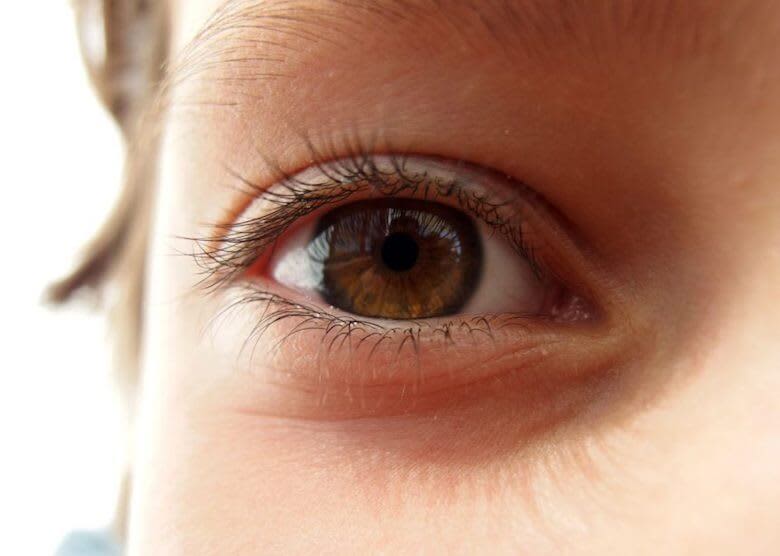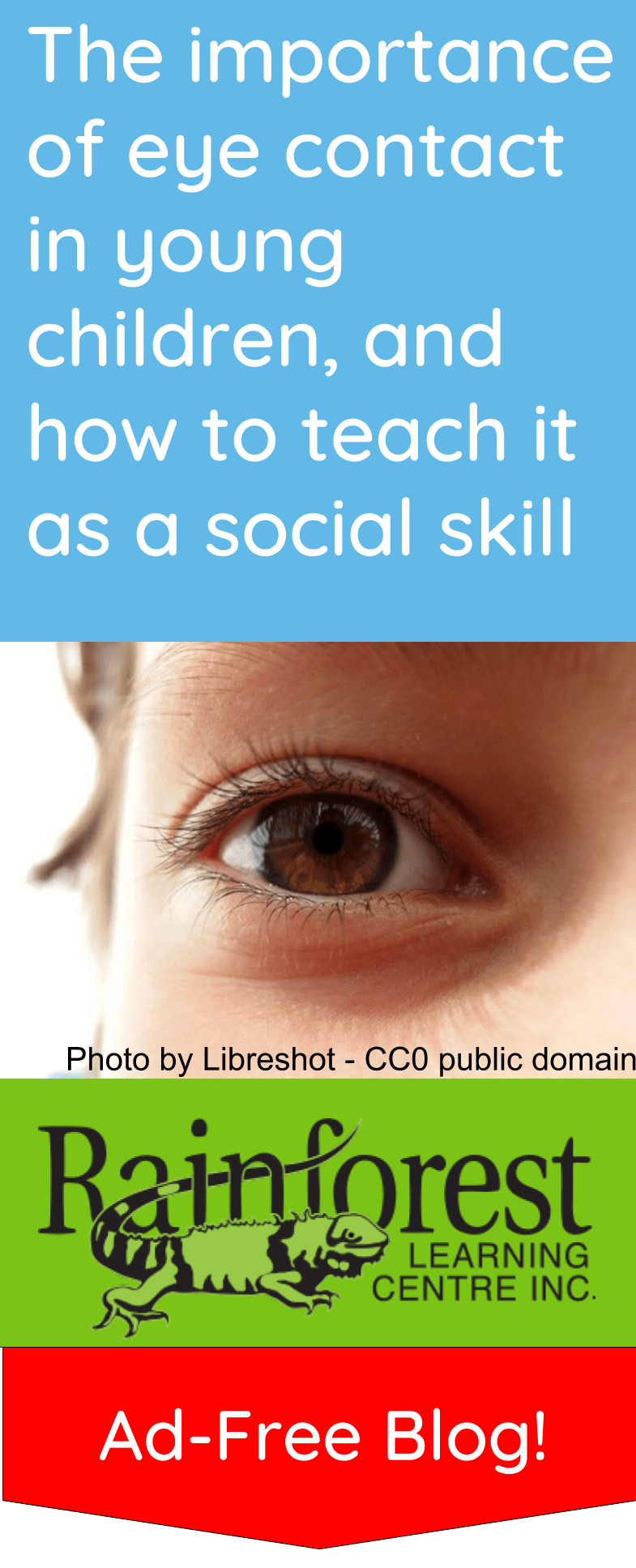
Sometimes, preschool-aged kids are shy. They can hide their faces, or try not to look at a person who is speaking to them – whether or not they are the same age. When they’re really young, we expect that of them. But as they grow older, parents find that the importance of eye contact in young children is crucial, and they need to teach it as a social skill. This was the discovery of one mom, who shared her story online, and learned that eye contact was probably making her daughter a less desired kid to hang out with.
We also know that lack of eye contact, or a lack of interest in eye contact is a sign of Autism. We’ve written about recognizing Autism on our blog here. Keep note that a child not making eye contact is not the only indicator of Autism! However, it is telling that the social skill is important in a child’s development.
Below we’ll give some ideas, gathered from around the web, on how to teach eye contact as a social skill in young children.
Find out why your child doesn’t make eye contact, and work backwards from there
According to Livestrong.com, a child who doesn’t make eye contact could be avoiding the social skill for multiple reasons. Before you delve into the activities for improving eye contact, it’s best to find the root cause of the issue. Is it because they are culturally conditioned to not make eye contact, as a sign of reverence to elders? Or is it because they are bothered by other things in the room? Be sensitive to your child’s feelings and thoughts – which they may not express in words. When you find out what is preventing them from wanting to make eye contact when someone speaks to them, you can more easily help the situation.
Teach eye contact in conjunction with social skills in toddlers and young children
According to Kidnurse.org, many children must learn how to be polite, but they don’t always learn to make eye contact. Making eye contact as a baby is crucial for development – mostly because they can’t see that far, and they need facial expressions to understand new things, and relationships.
Eye contact is also a very important non-verbal communication language at any age, not just in young children. So learning how to do it at a young age is beneficial to later years.
The solution, according to the article noted above, is that children should be pushed to use eye contact at the same time they are learning their please and thank-yous.
Thesocialexpress.com (where we learned the story of the mom mentioned above), agrees with this stance, and mentions that parents should work on the skill of eye contact with their children in a daily way. The parents themselves need to be role models, and look their children in the face when conversing with them too. When kids learn to look in the eyes of someone they are trying to communicate with, they should be given positive reinforcement. For example, “thank you for looking at me, that’s great!”
And, if the child is asking for something, the parent or caregiver should demand (nicely of course!) that they do while looking at them in the eye. Of course, this is not meant to go overboard – if your child is seriously having difficulties with eye contact as a social skill, take it easy! Go back to our first piece of advice, and find the root cause of the problem first – whilst being full of empathy.
Play eye-contact games with children
The internet has some fun ways to teach eye-contact with games. Remember, kids are born to play – it’s their way of learning social skills in the first place.
According to this YouTube video, daycare centres can play circle games that encourage eye-contact. For example, everyone writes an emotion on a sticky note, and places it on their forehead. They partner up and guess what the emotion is by facial expression exchange. The position of the sticky note and the reading of facial expressions forces the children to make eye contact.
Friendshipcircle.org lists 12 different children’s activities to encourage social skills, and eye-contact is among them. One example is holding a staring contest. We all remember that game from childhood, no? It’s super easy, and quick to play at any time of day with your child. You can also play mirroring games, where player A has to copy the facial expression and hand gestures of player B, and visa versa. This also helps the child learn how to focus on a person’s face when interacting with them.
Teaching eye contact with children is a skill to be learned over time
When you read into the story of the mom we mentioned in the intro of this article, you’ll notice that learning eye contact, for her daughter, was a long and hard process. Like the Livestrong.com article states, there could be a deeper problem, such as a sensory overload issue. That means the child isn’t just afraid of making eye contact. There is background to their reason for looking at the floor or looking away when speaking to others. For that reason, teaching eye contact as a social skill can take time and practice. Stick with it! And if things prove to be really tough when teaching eye contact, look into whether or not your child needs specific therapies.
See related on our blog:
- Should you be concerned about daycare if your baby has stranger anxiety?
- What is social competence in the early years?
- 3 key strategies to teach manners to toddlers and preschool-aged children
- What are age-appropriate manners for preschoolers in early childhood?
- Teaching young kids about stranger safety
Photo credit: Libreshot, under CC0 public domain license.
